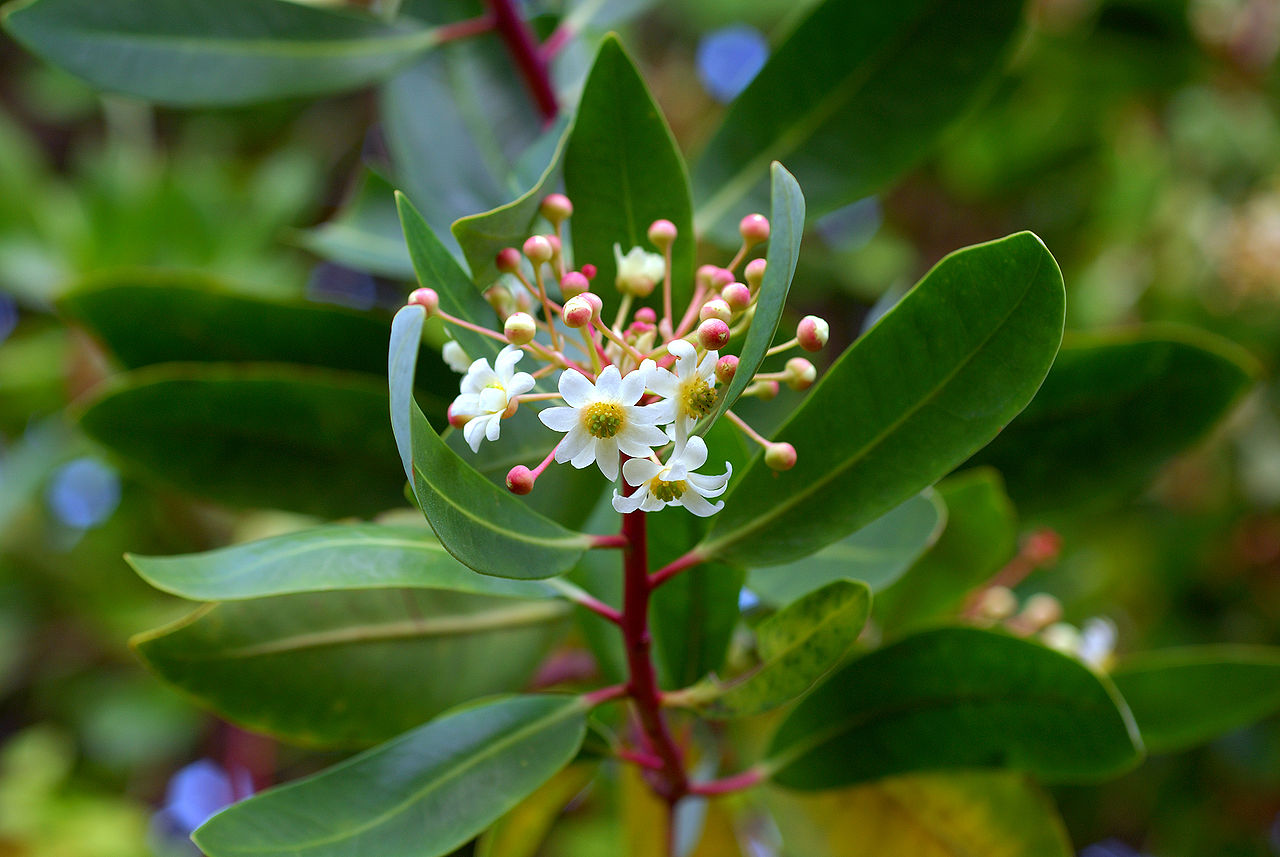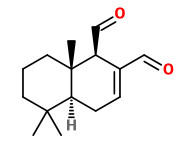Drimys winteri J.R.Forst. & G.Forst. - Winteraceae - Winter's bark, canelo (span.), Wintersrinde
Dominant evergreen tree in the coastal forests of southern Chile and Argentina; leaves alternate, simple, petiolate, entire, oblanceolate; flowers white with a yellow center. http://es.wikipedia.org/wiki/Drimys_winteri
„The bark is gray, thick and soft and is used as a pepper replacement in Argentina and Chile. The peppery compound in canelo is polygodial… centuries before vitamin C was isolated, „Winter's Bark“ was esteemed as a preventive and remedy for scurvy - correctly so, for an infusion of D. winteri sustained Captain James Cook and his crew in the South Pacific…“ http://en.wikipedia.org/wiki/Drimys_winteri
„The barks of Drimys winteri are used in folk medicine as a remedy to treat several diseases, including dolorous processes. Previous pre-clinical experiments carried out in our laboratories revealed that the hydroalcoholic extract of this plant showed anti-allergenic, anti-inflammatory and antinociceptive properties. Such promising results led us to determine the analgesic compounds present in D. winteri. Through conventional chromatographic procedures with fractions of CH2Cl2 and EtOAc obtained from methanolic extract, it was found that polygodial (1), 1-β-(p-methoxy-cynnamyl) polygodial (2), taxifolin (3) and astilbin (4), are the main components of these fractions. Compounds 1 and 2 exhibited marked antinociceptive action by intraperitoneal and oral routes against acetic acid-induced abdominal constrictions in mice, suggesting that they are responsible, at least partially, for the antinociceptive effects of this plant. In addition, both compounds were notably more potent than aspirin and acetaminophen, two well-known drugs used here as comparison.“
[Isolation and identification of active compounds from Drimys winteri barks. Cechinel Filho, V., Schlemper, V., Santos, A. R., Pinheiro, T. R., Yunes, R. A., Mendes, G. L., Delle Monache, F., Journal of ethnopharmacology, Vol.62(3), 1998, 223-227]
Main constituents of young bark essential oil were α-pinene (9.1%), limonene (8.9%), elemol (14.3%), eudesmol (12.7%), β-eudesmol (10.7%), and drimenol (17.6%; old bark only 2.7%).
„The bark was exported to Europe and named Cortex Winteri as a medicinal antiscorbutan until the late 1800s. In 1956, studies were made resulting in findings that Canelo bark has high concentrations of Vitamin C, tannines, and an oil containing sesquiterpenic lactones and flavonoids. The tree is sacred to the Araucanian Indians and is used in religious ceremonies.“
[Ebner, Raquel Alvarez. „Canelo products and methods of making and using same.“ U.S. Patent No. 6,444,235. 3 Sep. 2002]
The dried stem bark of D.winteri contained polygodial (8.1% d.w.).
[Zapata, Nelson, et al. „Antifeedant and growth inhibitory effects of extracts and drimanes of Drimys winteri stem bark against Spodoptera littoralis (Lep., Noctuidae).“ Industrial Crops and Products 30.1 (2009): 119-125]
„… essential oils from the hydrodistillation of … leaf and bark of D. winteri were 1.37 and 4.18%.
The main constituents in the D. winteri leaf oil were more diverse, with γ-curcumene + NI (= non-identified compound, 11.12%) and then a group of five compounds comprising 6-9%, i.e. limonene + myrcene, limonene + NI, trans-caryophyllene, α-pinene, sabinene and 4-terpineol. The main constituents in the oil from bark of D. winteri were α-pinene (57.82%), γ-curcumene (11.22%) and β-pinene + myrcene (7.37%).“
[Bioactivity of essential oils from leaves and bark of Laurelia sempervirens and Drimys winteri against Acyrthosiphon pisum. Zapata, N., Lognay, G., & Smagghe, G., Pest management science, Vol.66(12), 2010, 1324-1331]
The antifungal effect of an n-hexane extract of the bark corresponded to a fraction with polygodial, drimenin, drimenol, and isodrimenol.
„The essential oil had antifungal effect applied by contact or as a volatile… The components of the oil found in greater concentration were α-pinene (60.78%), β-pinene (12.09%), limonene (2.70%), and β-myrcene (2.50%).“
[Monsálvez, M., Zapata, N., Vargas, M., Berti, M., Bittner, M., & Hernández, V. Antifungal effects of n-hexane extract and essential oil of Drimys winteri bark against Take-All disease. Industrial Crops and Products, 31(2), 2010, 239-244]

Drimys winteri var. chilensis flowers (2007), Author Eric Hunt
CC BY-SA 2.5 Wikimedia Commons

